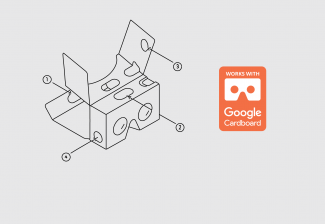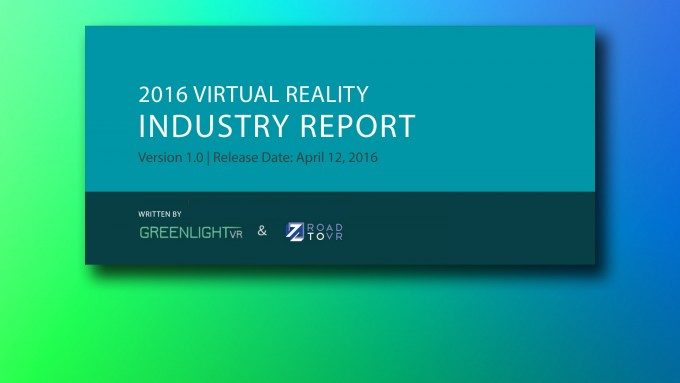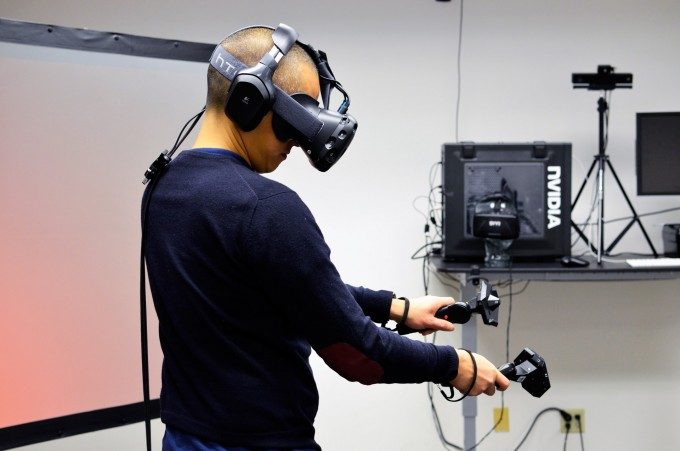Today we publish the 2016 Virtual Reality Industry Report. Co-authored with VR business intelligence firm Greenlight VR, the report is a distillation of years of experience, research, and analysis into an accessible and comprehensive foundation of the virtual reality landscape, with the goal of informing forward-looking strategies.
Bigger is Not Always Better (or more accurate)
So what’s the problem with projections? Big projections get big headlines. You don’t have to go searching very far or wide to find VR and AR industry projections forecasting market revenue of tens or hundreds of billions in short timeframes, or that massive numbers of VR headsets will ship in no time at all.
These sorts of stories get headlines because they paint a very optimistic picture of an industry that—in all truthfulness—is unproven and still in its earliest stages. At Road to VR, we see such juicy figures flaunted frequently in our direction, and often pass on reporting them.
Everyone in the industry wants to know that VR and AR is going to be wildly successful and that it’s going to happen fast. Investors especially, many of which are looking for maximum return on a minimal timeframe, are emboldened by the opportunity that the big numbers suggest. But great momentum doesn’t a projection make, it’s about what’s actually happening inside the black box of “the industry.”
Why the 2016 Virtual Reality Industry Report is Different
“We always overestimate the change that will occur in the next two years and underestimate the change that will occur in the next ten.” – popularly attributed to Bill Gates
In general, we’ve found that many of the projections we see are overly aggressive in their early timeline, seemingly trying to one-up each other as time goes on. We think that the VR industry will achieve its greatest potential when actors within are equipped with the most accurate knowledge.


We’ve applied our experience as the industry’s most senior VR-dedicated publication, combined with Greenlight VR’s trusted data-driven analysis, to create a comprehensive foundation of the virtual reality landscape and a realistic account of how the market will grow, not only in scale, but crucially, in time as well.
So when you glean insights from our 2016 VR Industry Report that aren’t all roses and sunshine—like that many developers don’t believe VR will begin to approach mainstream adoption for another 2-3 years, or that the industry is still lacking a killer app to drive that adoption—know that we aren’t going for big headlines, we’re going for big accuracy.
Buy the 2016 VR Industry Report
That’s not to say that the future isn’t bright. VR’s potential is huge and only getting bigger. We conclude at the forefront of our report that “VR is here to stay,” and that we’re overall optimistic about the industry, believing there to be an even larger potential market in the long-term than most other analyst forecasts.
VR may be here, but it’s also only just arrived. Here in 2016, virtual reality makes its first steps into the consumer marketplace where the uninitiated can handle and judge this new medium. And while what we have today is undoubtedly the best, most affordable virtual reality technology that’s ever existed, the opportunities for what comes next are even greater (and growing) than what we’ve seen up to this point.
From hardware to software and everywhere in between, virtual reality technology will only stop evolving once the experience it provides is indistinguishable from reality. That point is unlikely to be achieved within the lifetime of anyone reading our report in the year that it’s published, and that means that there’s, at minimum, a lifetime’s-worth of opportunity awaiting anyone involved in the field.
Prior to that far-flung future of a perfect simulation, there are countless opportunities for the technology in this year alone. While the initial wave of VR is focused on gaming and entertainment, the capabilities of the technology have wide reaching implications that will transform many industries.
For those who today see VR only as an entertainment platform, let’s return briefly to the original iPhone. As launched initially in 2007, the iPhone had very little support or focus on enterprise capabilities. It was seen as a toy that would never compete with the likes of the then-dominant BlackBerry. Yet as the device spread, the experience it provided was so widely enjoyed that the user base itself demanded that the iPhone become part of their enterprise workflow. Consequently, apps and enterprise integrations sprung forth, causing the iPhone to not only knock the former leader off of its throne, but to exceed the prior expectation of the role that such a device could and should play in our lives.
And now comes consumer VR systems which, to many not paying close attention, look like toys for entertainment. But the experience they provide is so profound—creating ‘instant converts’ out of the vast majority of first-time users—that the user base will demand that it become part of the enterprise workflow, and so much more.


